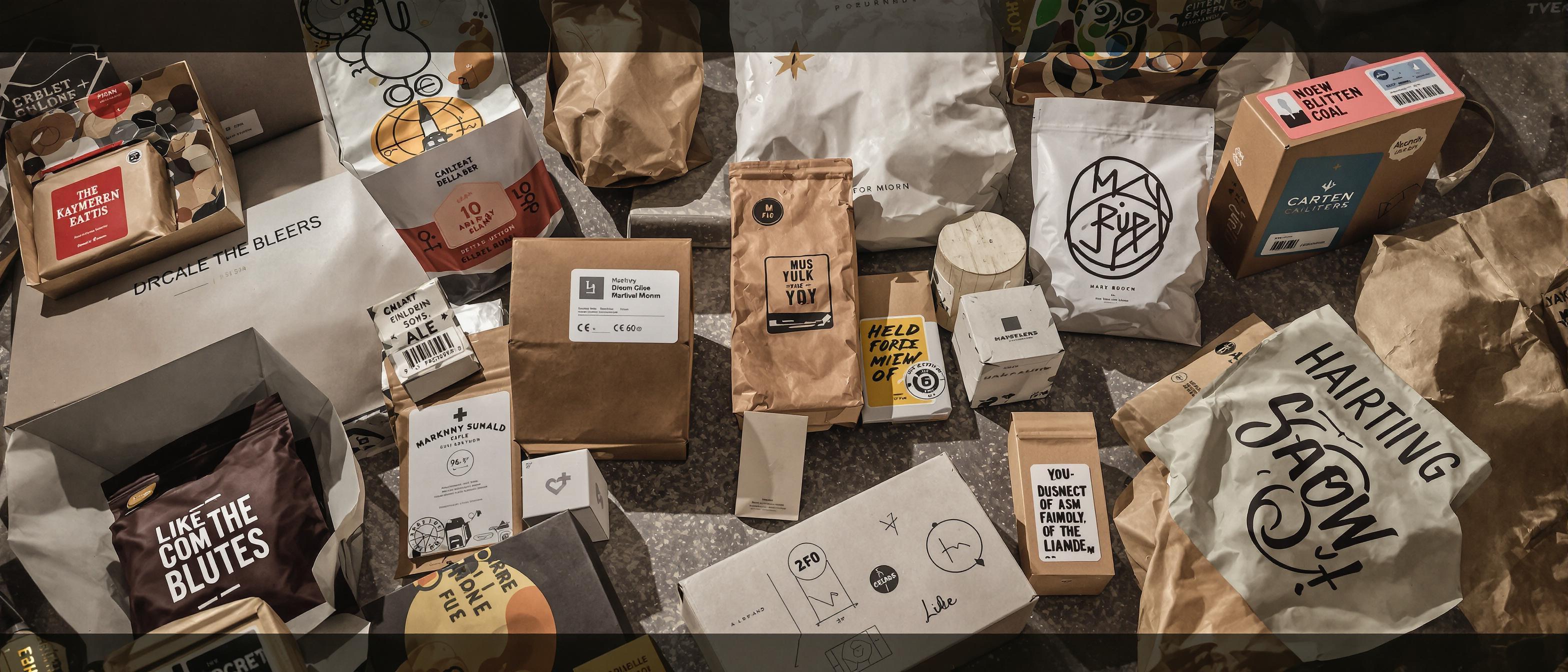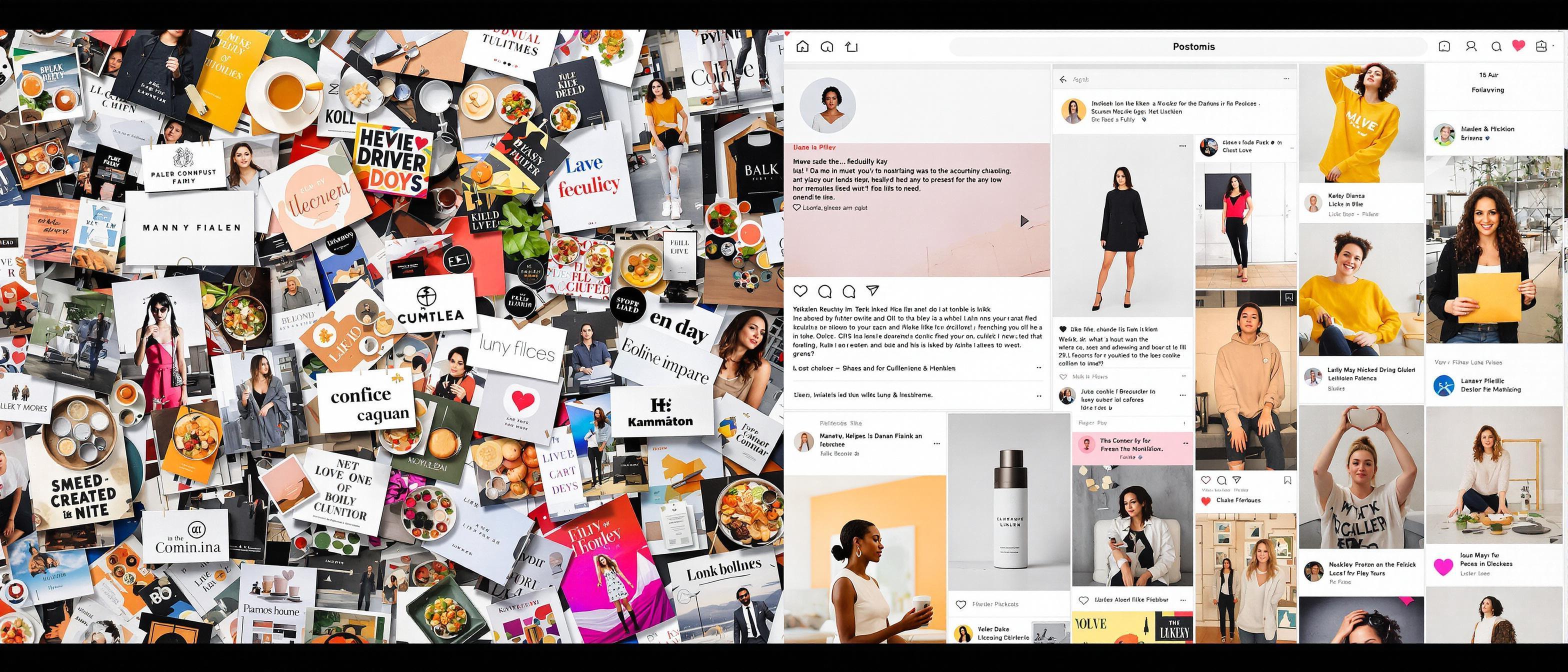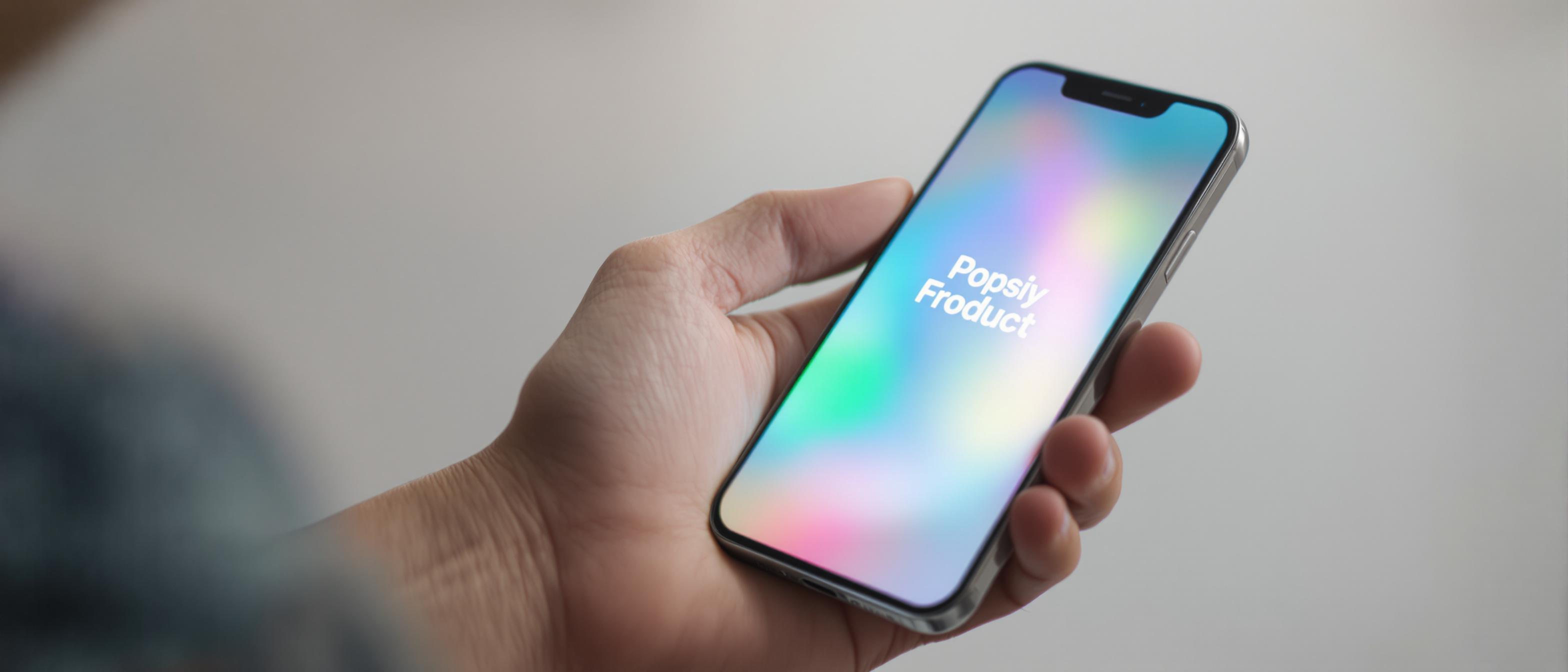Store Logo Creator: Design a Brand That Attracts Customers

Store Logo Creator: Design a Brand That Attracts Customers
Did you know that customers form an opinion about a brand within the first few seconds of seeing its logo? In today's competitive marketplace, your store's logo is often the first impression you make. That's why using a quality store logo creator is more important than ever. A well-designed logo not only grabs attention but also communicates your brand's values and personality.
This article is your comprehensive guide to creating a store logo that attracts customers and builds a strong brand identity. We'll explain why a great logo is essential for your store's success and the importance of branded images in building recognition. You'll also learn about common design mistakes to avoid, and how to choose the right store logo creator tool for your specific needs.
By the end of this article, you’ll have actionable tips for effective store logo design, empowering you to create a logo that not only looks great but also drives customer engagement and boosts your brand's overall appeal. Get ready to transform your store's image and make a lasting impression!
Table of Contents

Why Your Store Needs a Great Logo
Your store's logo is more than just a pretty picture; it's a vital part of your brand's identity. Think of it as the first impression you make on potential customers. In a crowded marketplace, a well-designed logo can be the key to attracting attention and building a successful business.
First Impressions Matter: When someone sees your logo, they instantly form an opinion about your store. A strong, visually appealing logo can convey professionalism, quality, and trustworthiness. On the other hand, a poorly designed logo can make your store look amateurish and unreliable. Consider well-known brands like Nike or Apple – their logos are instantly recognizable and evoke positive feelings.
Building Brand Recognition and Loyalty
A memorable logo helps customers remember your store. The more people see and recognize your logo, the more likely they are to think of your store when they need a product or service you offer. This recognition builds brand loyalty over time. For example, think about the golden arches of McDonald's. That simple logo instantly tells you what to expect, no matter where you are in the world.
- Consistency is Key: Use your logo consistently across all your marketing materials – your website, social media, business cards, and even your packaging. This reinforces your brand identity and makes it easier for customers to recognize you.
- Emotional Connection: A great logo can also create an emotional connection with your customers. Colors, shapes, and fonts can all evoke different feelings, so choose them carefully to reflect your brand's personality and values.
Conveying Trust and Credibility
A professional logo signals to potential customers that you are a legitimate and trustworthy business. In today's digital world, where online scams are common, building trust is more important than ever. A well-designed logo shows that you've invested time and effort into your brand, which can give customers confidence in your products or services.
Standing Out from the Competition
In a competitive market, a well-designed logo helps you differentiate yourself from the competition. It allows you to showcase your unique brand personality and values. A distinctive logo ensures that your store will stand out from the crowd, which makes it easier for customers to find and remember you. Consider the logos of competing coffee chains; each has a distinct style that aims to appeal to a specific customer base.
In conclusion, investing in a great logo is an investment in your store's future. It's a crucial element of your brand identity that can attract customers, build loyalty, and help you stand out from the competition. A store logo creator can be a useful tool to help you in the process of creating the perfect logo.

Understanding the Importance of Branded Images
In today's competitive market, creating a strong brand identity is crucial for success. Branded images play a vital role in shaping how customers perceive your store. They are more than just pretty pictures; they are a powerful tool for building recognition, fostering trust, and communicating your unique value proposition.
Creating a Cohesive and Professional Look
Branded images ensure a consistent and professional look across all your marketing channels. This includes your website, social media profiles, email campaigns, and even your physical store if you have one. Consistency in visual elements, such as your logo, color palette, and typography, creates a unified brand experience. This consistent presentation of your brand builds trust and credibility with your audience. Imagine a store with a messy storefront and a poorly designed website – it doesn't inspire confidence, does it? Similarly, inconsistent branding can confuse customers and dilute your brand message. A strong visual identity communicates who you are, what you’re about, and why people should want to interact with you. Conversely, a weak identity can degrade your brand experience.
Building Recognition and Memory
Consistent branding helps customers easily recognize and remember your store. Think about some of the most successful brands in the world – their logos and visual styles are instantly recognizable. This recognition is a valuable asset because it makes your store top-of-mind when customers are making purchasing decisions. Studies show that consumers are more likely to buy from brands they recognize. A signature color increases the chances of consumers recognizing a brand. By consistently using your branded images, you increase the likelihood that customers will remember you when they need your products or services. For instance, 75% of consumers recognize a brand by its logo.
Improving Engagement on Social Media
Branded images significantly improve engagement on social media and other online platforms. Visual content is more eye-catching than text alone and is more likely to be shared. Using branded images in your social media posts, ads, and profiles helps to reinforce your brand identity and attract attention. Consider these statistics: articles with relevant images get more views, and images on platforms like Facebook receive more engagement than videos and links. Moreover, a visually appealing and consistent social media presence demonstrates professionalism and attention to detail, further enhancing your brand's credibility.
Telling Your Brand Story and Communicating Values
Branded visuals can tell your brand story and communicate your values. Every visual element, from your logo to your website design, contributes to the overall narrative of your brand. By carefully selecting images, colors, and fonts that reflect your brand's personality and values, you can create a powerful and memorable brand experience. For example, a brand focused on sustainability might use earthy tones and images of nature to communicate its commitment to environmental responsibility. Visual storytelling allows brands to connect with their audience on an emotional level. In fact, brands can see a significant increase in conversion rate with emotional brand storytelling efforts. By crafting a compelling visual narrative, you can build a stronger connection with your customers and differentiate yourself from the competition.

Common Mistakes When Designing a Store Logo
Creating a memorable and effective logo is key to building a strong brand identity for your store. However, many businesses stumble when designing their logo, leading to missed opportunities and a weakened brand image. Avoiding these common mistakes can help you create a logo that truly represents your store and resonates with your target audience.
Overly Complex or Generic Designs
One of the biggest pitfalls is using designs that are too complicated or too generic. A complex logo with too many elements can be difficult to understand and remember. Aim for simplicity; think of iconic logos like Apple or Nike. They're clean, recognizable, and easy to scale. On the other hand, a generic logo that relies on overused symbols or clichés will fail to make your brand stand out. To avoid clichés, let your brainstorming sessions freely entertain out-of-the-box ideas instead of simply sticking to safe visual truisms. Your logo should reflect your brand's unique personality and values.
Poor Font and Color Choices
Typography and color play a huge role in how your logo is perceived. Choosing fonts that are hard to read, either because they are too decorative or too small, is a common error. Select fonts that are clear and legible, even at small sizes. Using too many different fonts (more than two) can also make a logo look cluttered and confusing. With the right typeface, your logo can communicate itself both visually and verbally. Font pairing is an art; combining a display font with a simple sans-serif can create a visual hierarchy. Likewise, colors evoke emotions and associations, so choose them carefully. Color psychology suggests that blue inspires trust, while yellow radiates friendliness. A "noisy" color palette of clashing or overly bright colors can be visually unappealing and detract from your brand message. Ideally, your logo design shouldn't contain more than three colors.
Ignoring Scalability and Format Compatibility
Failing to consider how the logo will look in different sizes and formats is another frequent mistake. Your logo needs to be scalable, meaning it should look good whether it's on a business card or a billboard. Logos should be designed with scalability in mind to maintain visual integrity and legibility across different sizes and screens. Always design your logo as a vector graphic, not a raster image. Vector files can scale infinitely without losing quality. Using a raster image renders the logo virtually un-scalable. Be sure to save your logo in various file formats (.SVG, .PNG, .JPEG) for different uses.
Neglecting Competitive Analysis
It's essential to research your competition before designing your logo. You want to create a logo that is unique and stands out, not one that blends in with the crowd. Analyze your competitors' logos to identify common themes, colors, and styles in your industry. Understanding the design, relevance, uniqueness, and scalability of your competitors' logos is important. Then, think about how you can differentiate your logo while still conveying the essence of your brand. Conduct market research to identify your key competitors. Competitive analysis helps you understand what others are doing to win clients or customers in your target market.

How to Choose the Right Store Logo Creator
Creating a logo for your store is an important step in building your brand. A good logo helps customers remember you and understand what your business is about. But with so many options available, how do you choose the right store logo creator?
First, think about your own design skills and how much money you want to spend. If you're comfortable with design software and have some experience, you might want to try creating a logo yourself. However, if you're new to design or have a limited budget, there are other options to consider.
Exploring Your Options
There are several ways to create a logo for your store:
- Online Logo Makers: These are websites that offer easy-to-use tools for creating logos. They often have pre-designed templates and drag-and-drop features, making it simple for anyone to create a professional-looking logo. Examples include Canva, Tailor Brands and Looka.
- Freelance Designers: You can hire a freelance designer to create a custom logo for you. This can be a good option if you want a unique and professional logo, but it can be more expensive than using an online logo maker. Websites like Upwork and Fiverr connect you with freelance designers.
- AI-Powered Tools: Some logo creators use artificial intelligence to generate logo designs based on your preferences. These tools can be a quick and affordable way to get a logo, but the results may not always be exactly what you want.
Key Features to Look For
When choosing a store logo creator, consider these important features:
- Customizable Templates and Design Elements: The best logo creators offer a wide variety of templates and design elements that you can customize to match your brand. Look for options to change colors, fonts, and layouts.
- Multiple Export Formats: Make sure the logo creator allows you to export your logo in various formats, such as JPG, PNG, and SVG. This will ensure that you can use your logo in different sizes and on different platforms without losing quality.
Choosing the right store logo creator depends on your individual needs and preferences. By considering your design skills, budget, and the features that are most important to you, you can find a tool that helps you create a logo that represents your brand effectively.

Tips for Effective Store Logo Design
Creating a great logo for your store is a crucial step in building a strong brand identity. Your logo is often the first thing customers see, so it needs to make a good impression. Here are some simple yet effective tips to help you design a logo that stands out and represents your brand well.
Keep it Simple, Memorable, and Relevant
A complicated logo can be hard to remember. Aim for simplicity. A simple logo is easier for customers to recognize and recall. Think of well-known brands like Apple or Nike; their logos are instantly recognizable because they are simple and clean. Ensure your logo is relevant to what your store offers. If you sell eco-friendly products, consider using natural elements or colors. Your logo should also be memorable. A unique design helps you stand out from the competition. Aim for a logo that people will easily remember and associate with your store.
Choose Readable Fonts and Appealing Colors
The fonts and colors you use play a significant role in how your logo is perceived. Select fonts that are easy to read, even from a distance or in small sizes. Avoid overly decorative or complex fonts that can strain the eyes. Colors evoke emotions and associations. For example, blue often represents trust and stability, while green can symbolize nature and health. Choose colors that align with your brand's personality and the message you want to convey. Using a limited color palette (2-3 colors) often works best to maintain a clean and professional look. Color psychology plays a big role in branding, so research the meanings behind different colors. For example, if you are selling comfort products such as mattresses, you may want to use colors that evoke comfort and relaxation.
Ensure Scalability
Your logo will appear in various places, from your website to business cards to social media profiles. It needs to look good regardless of the size. Make sure your logo is designed as a vector graphic so that it can be scaled up or down without losing quality. A blurry or pixelated logo can make your brand look unprofessional. Consider how your logo will look on different backgrounds as well. Ensure there is enough contrast, so it remains visible and clear.
Get Feedback
Before finalizing your logo, get opinions from others. Ask friends, family, or even potential customers what they think of your design. Do they understand what your brand is about? Does the logo appeal to them? Constructive criticism can help you identify areas for improvement and ensure your logo resonates with your target audience. Use this feedback to refine your logo and make it the best representation of your brand.

Create Branded Images Easily with WhateverLogo
WhateverLogo simplifies the process of creating professional-looking branded images for your store. While a store logo creator helps you design your initial logo, WhateverLogo takes your existing logo and seamlessly integrates it into various marketing visuals. This helps you maintain a strong and consistent brand presence across all your online platforms.
Quickly generate marketing materials, engaging social media graphics, and more using your logo. No more spending hours trying to design images from scratch. With WhateverLogo, you just upload your logo once, type in what you want, and instantly get professional images tailored to your brand.
Maintaining consistent branding is crucial for building trust and recognition with your customers. WhateverLogo ensures that your brand identity remains uniform across all your channels, whether it's your website, social media profiles, or email marketing campaigns. This consistency reinforces your brand message and strengthens your connection with your target audience.
You don't need any design skills to use WhateverLogo. It's designed to be user-friendly and intuitive. Simply upload your logo and start creating branded images in minutes. WhateverLogo saves all generated images to your personal library, allowing easy access and reuse for future campaigns.
Specific Use Cases for Your Store:
- Social Media Posts: Generate eye-catching social media graphics with your logo and store branding to promote products and engage with customers. Create visually appealing content that stands out in crowded newsfeeds.
- Website Banners: Create professional website banners featuring your logo and key marketing messages to attract and convert visitors. Use impactful visuals to highlight promotions and special offers.
- Email Marketing: Design branded email headers and footers with your logo to improve email open rates and build brand recognition. Make your emails more memorable and professional.
In short, if a store logo creator helps you *design* your logo, WhateverLogo helps you *use* your logo to build your brand.
Ready to create amazing branded images for your store? Try WhateverLogo today and see the difference!
Conclusion: Build Your Brand with a Strong Store Logo
Throughout this article, we've emphasized the importance of a great store logo, highlighting its role in attracting customers, building brand recognition, and conveying trust. We've covered common logo design mistakes to avoid and offered tips for creating effective and memorable logos. Choosing the right store logo creator is also a key decision in this process.
Remember, your logo is more than just a symbol; it's the face of your brand. By investing time and effort into its design, you're investing in your store's future success.
And once you have that perfect logo, consider how you can further leverage it to create cohesive branded images. Tools like WhateverLogo can help you easily integrate your logo into marketing materials, social media posts, and more, ensuring a consistent brand experience for your customers.
So, take the time to design a logo that truly represents your store and then find the right tools to amplify your brand. Your brand image awaits!
Frequently Asked Questions
How much does a store logo creator typically cost?
The cost of a store logo creator can vary widely. You can find free online tools that offer basic logo designs, but they often come with limited customization options. Subscription-based services, on the other hand, provide more advanced features and a wider selection of design elements for a recurring monthly or annual fee. One-time fees are also common, especially when hiring freelance designers. These can range from a few hundred to several thousand dollars, depending on the designer's experience and the complexity of the logo. When budgeting, consider your specific needs and the level of customization you require. For startups on a tight budget, online logo makers that cost as little as $10 to $50 are the most affordable option.
What makes a good logo for an online store?
A good logo for an online store should be simple, memorable, and relevant to your brand. Simplicity ensures that the logo is easily recognizable and doesn't overwhelm potential customers. Memorability is key to helping customers recall your brand, and relevance ensures that the logo aligns with your store's products or services. Versatility is also important; your logo should look good on various platforms, from your website to social media. Lastly, a good logo should be timeless, avoiding trendy design elements that may quickly become outdated. A successful logo relies on visual cues to impact its audience rather than text alone.
Can I trademark a logo created with a store logo creator?
Trademarking a logo created with a store logo creator can be complex. While it's technically possible to trademark such a logo, it can be challenging if the logo uses pre-made templates or generic design elements. To successfully trademark a logo, it needs to be original and distinctive enough to avoid confusion with existing trademarks. A thorough trademark search is crucial before attempting to register a logo. Keep in mind that using pre-made logo templates increases the risk of similarities with other logos. While having a logo grants the owner a common law trademark with unrestricted usage rights, the protection is limited without formal registration.
How can I use my store logo to build my brand?
Your store logo is the foundation of your brand's identity. Use it consistently across all your marketing materials, including your website, social media profiles, business cards, and product packaging. Consistency helps create a strong and recognizable brand image. Ensure that your logo is prominently displayed on your website's header and footer. Also, consider using your logo on company swag or promotional items to boost brand awareness. Your brand's color palette, the fonts, and logo placement should all follow a clear set of guidelines to ensure everyone is communicating the same way and using the same brand design principles.
What file formats should I use for my store logo?
For your store logo, using the right file formats is essential for maintaining quality and versatility. SVG or other vector formats are best because they can be scaled without losing image quality, making them ideal for various uses, from small website icons to large print materials. PNG files are excellent for digital applications where you need a transparent background. JPEG files are okay for some uses, but they can lose quality when scaled or edited. Always save your base logo designs in an editable format like AI (Adobe Illustrator) to allow for future edits. Most logos should be in a vector-based image format that supports transparency and scaling without losing image quality.